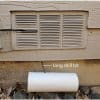Moving to a new home can be both exciting and overwhelming. Even when you’re able to plan ahead for the big move, there are so many things to consider – from packing boxes and purging items that don’t make the cut, to deciding what furniture and possessions will go where in your new abode.
One of the best ways to help simplify this process is by utilizing storage during transitional times like moving out or between homes. Let’s explore how!
How a Storage Unit Can Make Your Transition Easier
When transitioning to a new home, whether it’s nearby or far away, there is often a period of adjustment between leaving the old space and settling into the new one. Moving timelines don’t always align perfectly, leading to gaps between moving out of the old place and moving into the new one due to lease agreements, renovations, or other factors. During this time, a storage unit can offer much-needed assistance.
A storage unit serves as a temporary home for items that are not immediately needed. It allows you to carefully sort through your belongings, decide what to keep, and store the rest. This helps reduce the stress associated with packing and unpacking. Certain items, like delicate antiques, sensitive electronic devices, or valuable collections, require extra attention during a move.
Eventually, when you are ready to move into your new home, a storage unit can simplify the process. You can gradually transfer items from the unit to your new place, avoiding the chaos of unloading everything at once. In some cases, your new home may not provide sufficient storage space for all your possessions. A storage unit allows you to safely keep seasonal items, collectibles, or excess furniture.
Tips for Choosing the Best Storage for Your Needs

Whether you’re in need of temporary storage during a move or a more permanent solution for tidying up, these tips will assist you in selecting the ideal storage option:
Assess Your Storage Requirements
Before beginning your search for storage facilities, evaluate what needs to be stored. Take into account the quantity, size, and nature of your belongings. This will aid in determining the appropriate storage unit size and whether specific features like climate control or drive-up access are necessary.
Consider Location
Choose a storage facility that is convenient for you. Take into consideration its proximity to your home or workplace. If you anticipate frequent access to your stored items, it is crucial to select a location that is easily accessible.
Consider Pickup and Delivery Services
For maximum convenience during your move, consider using pickup and delivery storage services. These services have skilled individuals who collect and transport your belongings to a storage facility, saving you valuable time and effort. They possess expertise in packing and handling, guaranteeing the safety of your items. Tailor the service to your specific requirements, relish flexible access, and take advantage of additional safety measures.
Evaluate Security Measures
When choosing storage, security is of utmost importance. Look for facilities that employ robust security measures, which may include surveillance cameras, gated access, well-lit premises, and on-site staff. Your peace of mind is invaluable, so investing in a secure facility is well worth it.
Assess Climate Control
If you plan to store delicate items such as electronics, artwork, or furniture, climate-controlled storage may be necessary. This feature ensures stable temperature and humidity levels, safeguarding your valuables from extreme weather conditions.
Check Accessibility
Consider how often you will need to access your belongings. Facilities with extended hours or 24/7 access can be crucial if frequent entry to your storage unit is required.
Review Contracts and Pricing
Thoroughly read the storage contract before signing. Take note of rental rates, any hidden fees, and the terms of the lease. Understand the payment schedule and any penalties associated with late payments or early termination.
Consider Insurance
Although storage facilities may offer insurance coverage, it may not provide comprehensive protection for your belongings. Check if your homeowners or renters insurance can be extended to cover stored items or consider purchasing additional storage insurance.
Read Reviews and Seek Recommendations
Conduct thorough research on storage facilities by reading online reviews and seeking recommendations from friends or family who have utilized storage services. Learning from others’ experiences can help you make an informed decision.
Plan for Future Needs
Take into account the duration for which you will require storage. Some facilities offer discounts for long-term commitments, so if you anticipate needing storage for an extended period, inquire about such options.
7 Common Mistakes to Avoid When Using Storage During a Move

Using storage while moving can be a real lifesaver, but it’s crucial to approach it with careful planning and thoughtfulness. To ensure a seamless transition, steer clear of these common mistakes:
- Neglecting to Declutter Before Storing: Before putting things in storage, go through your belongings and decide what to keep, donate, or discard. Storing unnecessary items can result in wasted space and increased storage expenses.
- Selecting the Wrong Storage Unit Size: It’s better to choose a slightly larger unit than you think you’ll require to ensure sufficient space for all your items. An overly packed storage unit can make accessing your belongings a challenge.
- Forgetting to Label Boxes: Clearly label each box with its contents and the room it belongs to. This will save you time and effort when searching for specific items later on.
- Ignoring Climate Control Requirements: Valuables like wooden furniture, electronics, and delicate fabrics may need climate-controlled storage to prevent damage from temperature and humidity changes.
- Skipping Insurance: While many facilities offer insurance options, it’s crucial to understand the coverage and consider additional insurance if necessary. Without adequate insurance, you risk financial loss in case of theft, damage, or unforeseen events.
- Packing in a Disorganized Manner: Avoid overfilling boxes, as they can become excessively heavy and prone to damage. Use high-quality packing materials such as sturdy boxes and packing tape to safeguard your items.
- Failure to Create an Inventory: Keep a detailed list of the items you store and their location within the unit.
Final Thoughts
When you’re in that transitional phase of moving out before moving in, storage becomes your reliable companion. Whether you’re in between homes, downsizing, or temporarily relocating, it’s crucial to plan ahead and select the appropriate storage option. This is your opportunity to simplify the move, ensure the safety of your belongings, and stay organized during times of change. So,








